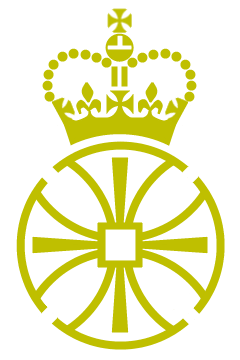Here is the history of an alternate Iberia in which the Umayyad Caliphate never collapsed in Iberia and instead survived until modern day. The history is presented through the four flags that gained popular use within the nation.
Umayyad Caliphate
756-1938 (Officially Adopted in 1788)
This flag was used unofficially from about the mid 13th century, and represents the green and gold colours flown by the armies of the caliphate from its earliest days. The Arabic writing in the centre reads literally as the "Umayyad Caliphate". Originally the nation used a plain white banner but this soon became impractical and a new banner was created. This was the most popular but wasn't officially adopted until the late 18th Century by the reforming Caliph Hisham IX.
Iberian Republic
1938-1955
The flag was adopted by the short-lived Iberian republic that attempted to turn the country into a democratic republic after the bloody revolution that deposed the last Caliph, Abd ar-Rahman VI. The Green reflects the Islamic nature of the country whilst the black centre band represents a sense of mourning for those lost in the struggle to depose the last Caliph who had plunged the country into economic ruin. The crescent and star is an exact replica of that adopted by Turkey and represents brotherhood with other Muslims across the world. The republic was not able to strike the right balance regarding secularism and both those who believed that the Muslim religion should have an impact on government and secularists were dissatisfied with the republic, leading to the 1955 civil war between the Secularists and the supporters of the introduction of Sharia.
Flag of the Iberian Secularists
1955-58 (Never Officially Adopted)
The flag was adopted by the secularists who fought the Sharia's in the Iberian Civil war from 1955-58. The black represents those lost both in the struggle against the Caliph in the revolution and for secularism in the Civil War. The white circle represents a positive future of peace and prosperity, whilst the star was a controversial addition forced in by the large socialist faction that the secularists relied on for a large body of their support. It is coloured green to reflect the country's Muslim past. The Secularists started well but despite being funded by a number of European nations, therefore having better weaponry and tactics then their opponents, they were vastly outnumbered and were inevitably defeated.
Islamic Republic of Iberia
1955-Modern Day (Officially adopted in 1958)
The flag was adopted by those who believed that Iberia should implement Sharia Law in all aspects of the country's political and penal instiutions. Originally a fringe movement in a traditionally less orthodox region of the Muslim world, many Muslims began to radicalize due to influential leadership of Husam Barak Bousaid who scared the Muslims of Iberia into believing that the Christian nations of Europe were preparing to invade to rid Islam from Europe. During the Civil War they were initially overwhelmed by the vast technological superiority of the Secularists but were able to eventually overwhelm them and install Bousaid as supreme ruler of the new Islamic Republic of Iberia in 1958.
The flag is plain green with an Arabic inscription meaning Allah in the centre of the flag, the simplicity of the flag representing the lack of decadence and pretense and their worship of Allah. Relations between the republic and the rest of Europe remain tense especially considering the numerous human rights breaches made by ageing despot Bousaid and his son and successor Sherif Barakat (who is in many ways the real leader) but there has never been all out war due to the country's economic worth and the wider support of the rest of the Muslim world that supplies these countries with a large proportion of their oil. However, many commentators believe that when 98 year old leader Bousaid dies the country will be thrown into chaos and will emerge very different.
















